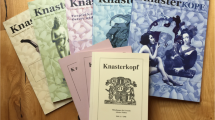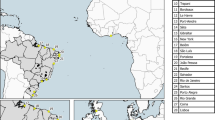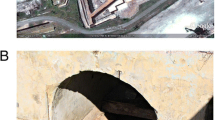Abstract
Among the ancestral Wendat peoples of southern Ontario, clay smoking pipes were one of the most common items of durable material culture. The well-documented role of pipes and pipe smoking in Native American ceremonies of healing and diplomacy can best be understood against this backdrop of more mundane, but pervasive, smoking practices. Since 2012, the Wendat Pipes Project (WPP) has involved a wide-ranging analysis of a collection of Iroquoian smoking pipes from the fifteenth-century Keffer site in south-central Ontario. The project seeks to understand all stages in the life history of fired clay smoking pipes at the site, from production through use, exchange, recycling, breakage, and discard. Results indicate that pipe smoking at Keffer was a multidimensional practice that could be improvised to suit a wide array of social contexts by different actors. Smoking pipes, I suggest, became crucial media for personal identity construction through the interweaving of personal experiences, embodied habits, and pipe life histories. The intimate entanglement of pipes and personhood arguably lay behind their involvement in rituals of social exchange.
Access this chapter
Tax calculation will be finalised at checkout
Purchases are for personal use only
Similar content being viewed by others
Notes
- 1.
These chemical groups were initially identified by visual inspection of bivariate data splitting plots. The ellipses shown in Fig. 3.4 represent these inferential groups. The association between artifact type (pottery vs. pipes) and chemistry was further examined statistically using Discriminant Function Analysis.
References
Birch, J. (2012). Coalescent communities: Settlement aggregation and social integration in Iroquoian Ontario. American Antiquity, 77(4), 646–670.
Blakeslee, D. J. (1981). The origin and spread of the calumet ceremony. American Antiquity, 46, 759–768.
Boyle, D. (1901). The human face in clay. Annual Archaeological Report for Ontario, 1900, 18–21.
Boyle, D. (1902). On the paganism of the civilized Iroquois of Ontario. Annual Archaeological Report for Ontario, 1901, 115–131.
Braun, G. V. (2012). Petrography as a technique for investigating Iroquoian ceramic production and smoking rituals. Journal of Archaeological Science, 39, 1–10.
Creese, J. L. (2011). Deyughnyonkwarakda-“At the Wood’s Edge”: The development of the Iroquoian Village in Southern Ontario, A.D. 900–1500. Ph.D. Dissertation, Department of Anthropology/University of Toronto.
Dietler, M., & Hayden, B. (2001). Feasts: Archaeological and ethnographic perspectives on food, politics, and power. Washington, DC: Smithsonian Institution.
Drooker, P. B. (2004). Pipes, leadership, and interregional interaction in protohistoric midwestern and northeastern North America. In S. M. Rafferty & R. Mann (Eds.), Smoking and culture: The archaeology of tobacco pipes in eastern North America (pp. 73–123). Knoxville, TN: University of Tennessee Press.
Dussubieux, L., Golitko, M., Williams, P. R., & Speakman, R. J. (2007). LA-ICP-MS analysis applied to the characterization of Peruvian Wari ceramics. In M. D. Glascock (Ed.), Archaeological chemistry: Analytical techniques and archaeological interpretation (pp. 349–363). Washington, DC: American Chemical Society.
Engelbrecht, W. E. (2003). Iroquoia: The development of a native world. Syracuse, NY: Syracuse University Press.
Finlayson, W. D., Smith, D. G., & Wheeler, B. (1987). What Columbus missed! Toronto, Ontario, Canada: St. George Press.
Finlayson, W. D., Spence, M., Smith, D. G., & Timmins, P. (1985). The 1985 salvage excavations at the Keffer site: A field report. Kewa, 85(8), 2–10.
Fox, W. (2002). Thaniba wakandagi among the Ontario Iroquois. Canadian Journal of Archaeology, 26(2), 130–151.
Glascock, M. D. (1992). Characterization of archaeological ceramics at MURR by neutron activation analysis. In H. Neff (Ed.), Chemical characterization of ceramic pastes in archaeology (pp. 11–26). Madison, WA: Prehistory Press.
Hall, R. L. (1983). The evolution of the calumet pipe. In G. E. Gibbon (Ed.), Prairie archaeology: Papers in honor of David A. Baerris (pp. 37–52). Minneapolis, MN: University of Minnesota.
Hoskins, J. (2006). Agency, biography and objects. In C. Tilley, W. Keane, S. Küchler, M. Rowlands, & P. Spyer (Eds.), Handbook of material culture (pp. 74–84). London: Sage.
Joy, J. (2009). Reinvigorating object biography: Reproducing the drama of object lives. World Archaeology, 41(4), 540–556.
Kapches, M. (1992). “Rude but perfect” (Beauchamp 1899): A study of miniature smoking pipes in Iroquoia. In C. F. Hayes, C. C. Bodner, & M. L. Sempowski (Eds.), Proceedings of the 1989 smoking pipe conference (pp. 71–81). Rochester, NY: Rochester Museum.
Katzenberg, M. A., Schwarcz, H. P., Knyfe, M., & Melbye, F. J. (1995). Stable isotope evidence for maize horticulture and paleodiet in southern Ontario, Canada. American Antiquity, 60, 335–350.
Kearsley, R. G. (1997). Pinched-face human effigy pipes: The social mechanisms that conditioned their manufacture and use in seventeenth century Iroquoia. Unpublished MA Thesis, Trent University.
Kenyon, W. A. (1982). The Grimsby site: A historic neutral cemetery. Toronto, Ontario, Canada: Royal Ontario Museum.
Kidd, K. E. (1953). The excavation and historical identification of a Huron ossuary. American Antiquity, 18(4), 359–379.
Knappett, C. (2006). Beyond skin: Layering and networking in art and archaeology. Cambridge Archaeological Journal, 16(2), 239–251.
Knappett, C., & Malafouris, L. (2008). Material agency: Towards a non-anthropocentric approach. New York: Springer.
Kopytoff, I. (1986). The cultural biography of things: Commoditization as process. In A. Appadurai (Ed.), The social life of things: Commodities in cultural perspective (pp. 64–91). Cambridge, MA: Cambridge University Press.
Kuchler, S. (2002). Malanggan: Art, memory and sacrifice. London: Berg.
Kuhn, R. D. (1987). Trade and exchange among the Mohawk-Iroquois: A trace element analysis of ceramic smoking pipes. North American Archaeologist, 8(4), 305–315.
Kuhn, R., & Sempowski, M. (2001). A new approach to dating the League of the Iroquois. American Antiquity, 66(2), 301–314.
Laidlaw, G. E. (1903). Effigy pipes in stone. Annual Archaeological Report for Ontario, 1902, 37–58.
Mann, R. (2004). Smokescreens: Tobacco, pipes, and the transformational power of fur trade rituals. In S. M. Rafferty & R. Mann (Eds.), Smoking and culture: The archaeology of tobacco pipes in eastern North America (pp. 165–183). Knoxville, TN: University of Tennessee Press.
Marshall, Y., & Gosden, C. (1999). The cultural biography of objects. World Archaeology, 31(2), 169–178.
Mathews, Z. P. (1976). Huron pipes and Iroquoian shamanism. Man in the Northeast, 12, 15–31.
Mathews, Z. P. (1978). The relation of Seneca false face masks to Seneca and Ontario archaeology. New York: Garland.
Mathews, Z. P. (1981). The identification of animals on Ontario Iroquoian pipes. Canadian Journal of Archaeology, 5, 31–48.
Mauss, M. (1966). The gift: Forms and functions of exchange in archaic societies. London: Cohen & West.
McLuhan, M. (1964). Understanding media: The extensions of man. New York: McGraw-Hill.
Michelaki, K., & Hancock, R. G. V. (2011). Chemistry versus data dispersion: Is there a better way to assess and interpret archaeometric data. Archaeometry, 53(6), 1259–1279.
Mills, B. J., & Walker, W. H. (2008). Memory work: Archaeologies of material practices. Santa Fe, NM: School for Advanced Research Press.
Noble, W. C. (1979). Ontario Iroquois effigy pipes. Canadian Journal of Archaeology, 3, 69–90.
Paper, J. D. (1988). Offering smoke: The sacred pipe and Native American religion. Moscow: University of Idaho Press.
Rice, P. M. (1987). Pottery analysis: A sourcebook. Chicago: University of Chicago Press.
Robb, J. E. (1998). The archaeology of symbols. Annual Review of Anthropology, 27, 329–346.
Robertson, D. (2005). Glimpsed through the smoke: A survey of two-dimensional figurative imagery on Woodland period smoking pipes from southern Ontario. Ontario Archaeology, 79(80), 38–61.
Sioui, G. (1999). Huron-Wendat: Heritage of the circle. Vancouver, British Columbia, Canada: University of British Columbia Press.
Smith, D. G. (1985). The Keffer site salvage excavations—1985. The Palisade Post, 7(6), 1–4.
Smith, D. G. (1987). The Keffer site compared to the Lawson and Draper sites. The Palisade Post, 8(4), 1–3.
Smith, D. G. (1991). Keffer site (AkGv-14) rim sections and ceramic smoking pipes. London, Ontario, Canada: Museum of Indian Archaeology.
Smith, D. G. (1992). Stylistic variation in Middleport smoking pipes. In C. F. Hayes, C. C. Bodner, & M. L. Sempowski (Eds.), Proceedings of the 1989 smoking pipe conference (pp. 15–30). Rochester, NY: Rochester Museum.
Speakman, R. J., Glascock, M. D., Tykot, R. H., Descantes, C., Thatcher, J. J., Skinner, C. E., et al. (2007). Selected applications of laser ablation inductively coupled plasma mass spectrometry to archaeological research. In M. D. Glascock (Ed.), Archaeological chemistry: Analytical techniques and archaeological interpretation (pp. 275–296). Washington, DC: American Chemical Society.
Steckley, J. L. (2007). Words of the Huron. Waterloo, Ontario, Canada: Wilfrid Laurier University Press.
Stewart, S. (1993). On longing: Narratives of the miniature, the gigantic, the souvenir, the collection. Durham, NC: Duke University Press.
Thwaites, R. G. et al. (ed.) (1901). The Jesuit relations and allied documents. Cleveland, OH: Burrows Brothers. (Original work published 1896).
von Gernet, A. D. (1982). Interpreting intrasite spatial distribution of artifacts: The Draper site pipe fragments. Man in the Northeast, 23, 49–60.
von Gernet, A. D. (1992). Hallucinogens and the origins of the Iroquoian pipe/tobacco/smoking complex. In C. F. Hayes, C. C. Bodner, & M. L. Sempowski (Eds.), Proceedings of the 1989 smoking pipe conference (pp. 171–185). Rochester, NY: Rochester Museum.
von Gernet, A. D. (2000). North American indigenous Nicotiana use and tobacco shamanism: The early documentary record, 1520–1660. In J. C. Winter (Ed.), Tobacco use by native North Americans: Sacred smoke and silent killer (pp. 59–80). Norman, OK: University of Oklahoma Press.
von Gernet, A. D., & Timmins, P. A. (1987). Pipes and parakeets: Constructing meaning in an Early Iroquoian context. In I. Hodder (Ed.), Archaeology as long-term history (pp. 31–42). Cambridge, MA: Cambridge University Press.
Warrick, G. (2008). A population history of the Huron-Petun, A.D. 500–1650. Cambridge, MA: Cambridge University Press.
Weiner, A. (1992). Inalienable possessions: The paradox of keeping-while-giving. Berkeley, CA: University of California Press.
Williamson, R. F., & Pfeiffer, S. (2003). Bones of the ancestors: The archaeology and osteobiography of the Moatfield ossuary. Gatineau, Quebec, Canada: The Canadian Museum of Civilization.
Wonderley, A. (2002). Oneida ceramic effigies: A question of meaning. Northeast Anthropology, 63, 23–48.
Wonderley, A. (2005). Effigy pipes, diplomacy, and myth: Exploring interaction between St. Lawrence Iroquoians and eastern Iroquois in New York State. American Antiquity, 70, 211–240.
Wright, J. V. (1966). The Ontario Iroquois tradition. Ottawa, Ontario, Canada: National Museum of Canada.
Wrong, G. M. (Ed.). (1939). Sagard’s long journey to the Huron. Toronto, Ontario, Canada: The Champlain Society.
Acknowledgements
I’d like to thank Elizabeth A. Bollwerk for the invitation to participate in the conference session from which this chapter was developed and for her helpful editorial guidance. I am also particularly indebted to WPP collaborators at the University of Toronto: Gregory Braun for his work identifying fabric groups, consulting on LA-ICP-MS, collecting clay samples, and his wealth of insight related to Iroquoian pipe manufacture; Susan Dermarkar for assisting with sampling Keffer pottery vessels and sponsoring their analysis, and David G. Smith for facilitating access to the Keffer collections, providing the digitized settlement plan, and consulting on innumerable aspects of the project. Chris Creese kindly assisted with attribute recording and analysis. Funding was provided by a Social Sciences and Humanities Research Council of Canada Postdoctoral Fellowship and a McDonald Institute for Archaeological Research Fieldwork Grant. LA-ICP-MS analysis was conducted under the supervision of Laure Dussubieux of the Elemental Analysis Facility at the Field Museum, Chicago. A number of other colleagues have contributed to the intellectual development of the project, including Elizabeth DeMarrais, John Robb, Alice Samson, and Katherine Spielmann. Any errors or oversights are solely my responsibility.
Author information
Authors and Affiliations
Corresponding author
Editor information
Editors and Affiliations
Rights and permissions
Copyright information
© 2016 Springer International Publishing Switzerland
About this chapter
Cite this chapter
Creese, J.L. (2016). Making Pipes and Social Persons at the Keffer Site: A Life History Approach. In: Bollwerk, E.A., Tushingham, S. (eds) Perspectives on the Archaeology of Pipes, Tobacco and other Smoke Plants in the Ancient Americas. Interdisciplinary Contributions to Archaeology. Springer, Cham. https://doi.org/10.1007/978-3-319-23552-3_3
Download citation
DOI: https://doi.org/10.1007/978-3-319-23552-3_3
Publisher Name: Springer, Cham
Print ISBN: 978-3-319-23551-6
Online ISBN: 978-3-319-23552-3
eBook Packages: Social SciencesSocial Sciences (R0)




